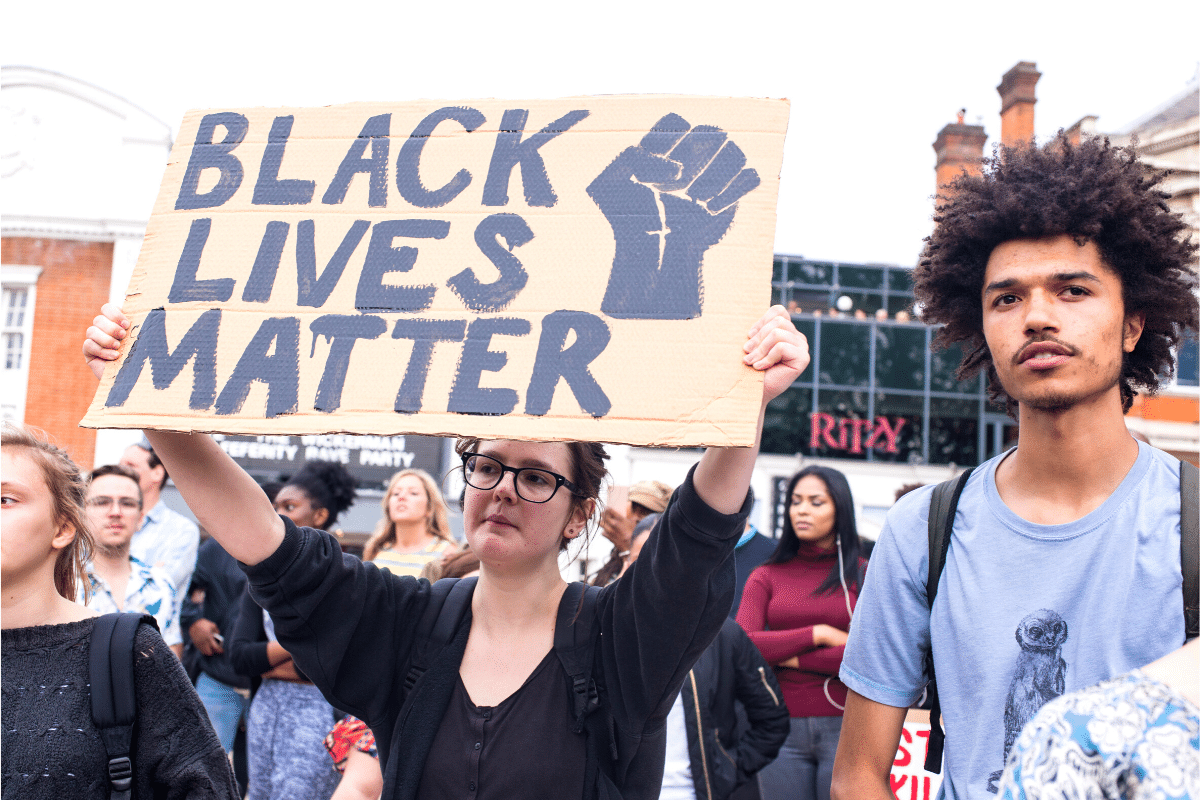Anti-Racism
Racial Justice: Don’t Abandon the Incrementalist Approach
Another reason that many liberals have increasingly rejected incrementalism is that racial disparities appear to be unchanged.

Incremental policies to ameliorate racial disparities are facing declining support for a number of reasons: changing liberal attitudes, perceptions of unchanging racist barriers to black advancement, and an unwillingness to delay black success for another generation. This essay will document these three factors and explain why they do not negate the benefits of the incrementalist approach.
Shifting liberal attitudes
During the 1990s, Bill Clinton and Tony Blair won national elections twice by generally governing as centrist third-way candidates. A decade later, Barack Obama took the same path to victory. Recall his 2004 Democratic Convention speech that catapulted him to national prominence. Obama stated:
Now even as we speak, there are those who are preparing to divide us, the spin masters and negative ad peddlers who embrace the politics of anything goes. Well, I say to them tonight, there’s not a liberal America and a conservative America; there’s the United States of America. There’s not a black America and a white America and Latino America and Asian America; there’s the United States of America.
In the last decade, however, Obama’s Democratic Party and Blair’s Labour Party have veered sharply to the left. In particular, incremental reforms are now seen as not only inadequate but as instruments to maintain inequalities: they ameliorate the worst aspects without changing the structural impediments.
Nowhere has this political transformation been more apparent than on issues related to the black community. The share of white liberals that believed racial discrimination was very serious went from a fairly consistent one-quarter between 2000 and 2010 to 58 percent by 2016. White liberals who believed that black Americans have an equal chance fell from over half to one-third.
Indeed, Obama’s policies on charter schools, vocational training, and criminal justice reform were sharply criticized by leftwing Democrats. The journalist Jamelle Bouie rejected Obama’s incrementalism:
Yes, you can do a lot to mitigate [family disadvantages] by providing mentors, training, college prep, and other services. But there’s no way this approach can help the large majority of the young men and women in these environments…
Obama’s criminal justice reforms were strongly criticized by the 2016 Robert F. Kennedy Human Rights Award winner Glenn E. Martin. He complained that Obama “continued to rhetorically throw most people in the system under the bus by dividing us into the misleading binary categories of ‘violent’ versus ‘nonviolent’ when people convicted of crimes defined as ‘violent’ have as much capacity for rehabilitation and redemption as anyone else.”

Persistence of inequalities
Another reason that many liberals have increasingly rejected incrementalism is that racial disparities appear to be unchanged. But that is not the case. Forty years ago, structural racism in American society was clearly evidenced in arrest statistics, housing availability, educational funding, and employment. But in the last two decades, many of these barriers have been decisively reduced. Increased diversity in the workforce, the expansion of human resource departments, and evolving white attitudes have all had positive impacts on urban policing, the criminal justice system, public schools, and employment practices.
In an effort to minimize these positive changes, critics continue to stress past injustices, even when discussing contemporary trends. When discussing mass incarceration as part of the 1619 Project, Bryan Stevenson uncritically referenced Michelle Alexander’s incorrect assertion that black mass incarceration continues to be a product of the unequal enforcement of drug laws. Even a decade ago, when Alexander’s book The New Jim Crow was published, drug arrests were no longer the driving force behind black incarceration. Instead, it has been arrests for violent crimes.
Similarly, a 2015 essay on the damaging effects of lead poisoning among young black children living in poor neighborhoods referenced data from the early 1990s. A 2020 article on racial inequities in health care referenced three studies documenting unequal treatment—all of them were more than 20 years old; one was even from the 1980s. Thus, systematic evidence from the past is interwoven with anecdotal examples of racist actions in the present to prove the unending reign of white supremacy.
Another source of pessimism are the economic studies that measure racial earnings disparities. A very influential paper by Valerie Wilson and William Rodgers argued that these gaps have actually grown: “Black men’s average hourly wages were 22.2 percent lower than those of white men in 1979 and declined to 31.0 percent lower by 2015.” This persistent racial disparity reinforces much of today’s outrage.
What is at issue here, however, is how much of the earnings gap is due to overt employment discrimination and how much is the result of differences in skills, occupations, and abilities. Together with some liberal economists, I believe that the best statistical models only attribute a modest share of the gap to labor market discrimination. Nobel prize winner James Heckman contends that labor market discrimination is “no longer a first-order quantitative problem in American society.” Rather, Heckman points to the skill deficiencies. Similarly, Harry Holzer suggested, “Differences in educational attainment and test scores together may account for most of the racial differences in earnings…” More recently, in a comprehensive study, Roland Fryer also found that the vast majority of earnings disparities are the result of skill and productivity differences.
Professional employment delayed
A final reason for liberal reluctance is that incrementalism rejects the four-year-college-for-all goal. At best, many liberals reason, a shift to vocational training may enable a greater share of black Americans to find stable working-class employment but it forecloses professional careers for too many black Americans. However, most community colleges have graduation rates well below 30 percent. As a result, one-quarter of all black men aged 29 to 34 years old have some college but no degree.
The college failure rates reflect weak preparation. The most recent high school statistics find that 64 and 48 percent of black 12th graders tested deficiently in math and reading respectively. Brown University educator Susanna Loeb is particularly troubled by the scores for the weakest students. She wrote that in the last decade, “for the lowest 10 percent of students, scores have dropped across the board.” For most of these at-risk students, certificate and apprenticeship programs offer the best chances for success.
There are numerous cases where certificate holders earn more than those with an associate’s degree and sometimes even more than the median four-year degree holder. However, a legitimate concern is that many of these certificate programs lead to jobs that have fairly low starting salaries. In an opinion essay, Washington State Congressman Adam Smith wrote,
At the Amazon fulfillment center in Kent, workers make $16 an hour to start, with good benefits. However, try finding housing in the Kent area on $16 an hour. Why can’t these workers be paid $25 an hour?… I have yet to hear a reasonable argument for why a small portion of [Amazon’s] wealth couldn’t go to the blue-collar workers… so they could afford a place to live and to pay for college for their children.

While starting salaries might be low, remaining in steady employment pays off over time. A Princeton study found that, after holding educational levels constant, inflation-adjusted wages increased by 75 percent as the youngest full-time, year-round workers aged by 20 years. Similarly, US Census data indicated that in 2018, 50 year-old black men averaged 38 percent higher wages than 30 year-old black men. Moreover, “stackable credentials” provide a sequence of certificates, enabling workers to build their careers.
Though certificate programs may have low starting wages, many apprenticeship programs do not. Studies indicate that their long-term earnings benefits exceed the gains from completing a degree at a community college. A 10 state study documented large and statistically significant earnings gains from participation in apprenticeship programs.
Concluding remarks
It is hard to convince caring individuals that the continued everyday instances of racist behavior no longer reflect the systemic racism of decades earlier. On the basis of statistical studies, it is hard to convince them that the unchanging unadjusted racial wage gaps no longer reflect racist hiring practices. On the basis of current failure rates, it is hard to convince them that the goal of a four-year college education for all should be abandoned. Caring individuals yearn for more equality now and are reluctant to give up maximalist demands.
But the stakes are too high to accept defeat. Without a more realistic agenda that focuses on improving the skills of elementary school students, increasing school discipline, and engaging parents to develop more student support in their homes, a large share of students will continue to lack skills necessary to succeed in academic post-secondary programs. Without an emphasis on skills development necessary for demanding occupations, the pipeline of qualified black applicants will be inadequate. And yes, we should confront the vestiges of structural racism and the harmful role that negative racial stereotypes still play. These are the incremental approaches that can be successful, and fighting for them is still worth it.
Robert Cherry is professor emeritus from Brooklyn College and a member of 1776 Unites.






